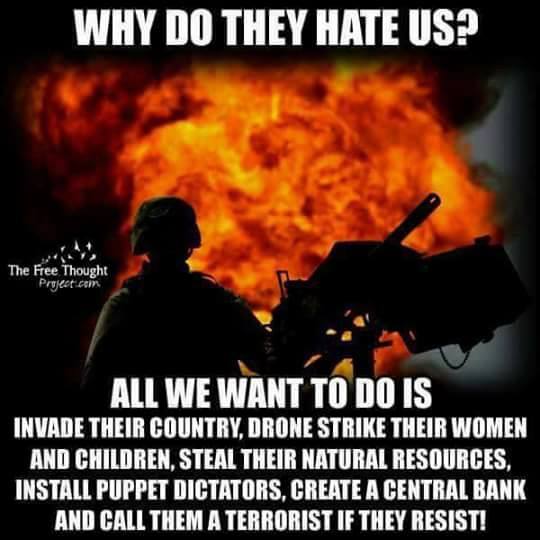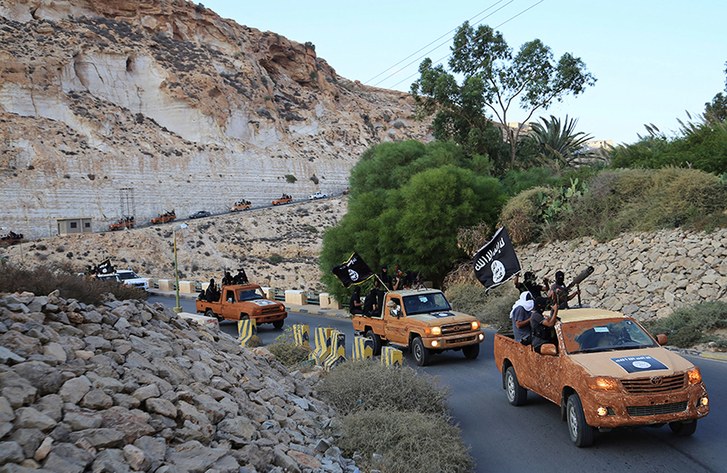
Views: 2067
One has to wonder just how much longer the American people will silently permit the categorical failure of American foreign policy, both in theory and in practice. The evidence confirming the totality of our failure is breathtaking in scope and severity. Changes are needed to preserve U.S. national security and economic prosperity.
Recent headlines have captured the character of this failure. Fifteen years after the invasion of Afghanistan, the Special Inspector General for Afghan Reconstruction (SIGAR) released findings that “corruption substantially undermined the U.S. mission in Afghanistan from the very beginning of Operation Enduring Freedom. … We conclude that failure to effectively address the problem means U.S. reconstruction programs, at best, will continue to be subverted by systemic corruption and, at worst, will fail.”
Earlier this month, a British Parliament study found that the result of Western military intervention in Libya “was political and economic collapse, inter-militia and inter-tribal warfare, humanitarian and migrant crises, widespread human rights violations, the spread of Gaddafi regime weapons across the region and the growth of ISIL in North Africa.”
Airstrikes and drone attacks are accidentally killing thousands of civilians, aid workers, wedding parties, and now even the troops of a nation against whom we are not at war. Each of these mistakes, repeated hundreds of times over the past 15 years, creates more antagonism and hatred of the United States than any other single event. Whatever tactical benefit some of the strikes do accomplish, they are consumed in the still-worsening strategic failure the misfires cause.
Bottom line: The use of military power since 2001 has:
- Turned a previously whole and regionally impotent Iraq that balanced Iran into a factory of terrorism and a client of Tehran;
- Turned Afghanistan from a country with a two-sided civil war—contained within its own borders—into a dysfunctional state that serves as a magnet for terrorists.
- Turned a Libya that suffered internal unrest, but didn’t threaten its neighbors or harbor terrorists, into an “unmitigated failure” featuring a raging civil war, serving as an African beachhead for ISIS and a terrorist breeding ground;
- Contributed to the expansion of al-Qaeda into a “franchise” group, spawned a new strain when ISIS was born out of the vacuum created by our Iraq invasion, and seen major terrorist threats explode worldwide;
- Joined other nations in battles in Pakistan, Yemen, Somalia, and other areas within Africa whose only result has been the expansion of the threat and the deepening of the suffering of the civil populations.
These continued and deepening failures kill unknown numbers of innocent civilians each year, intensify and spread the hatred many have of America, and incrementally weaken our national security. But these military failures have another, less obvious but more troubling cost.
Perpetual fighting dissipates the fighting strength of the armed forces. The non-stop employment of the U.S. Air Force in flying sorties, bombing runs, and strategic airlift has been orders of magnitude higher than what it was in the 15 years prior to 9/11, dramatically cutting short the lifespan of each aircraft, increasing the maintenance requirements, and depleting stocks of bombs and missiles.
The U.S. Army and Marine Corps have put thousands of miles of grueling use on their tanks and other armored vehicles and worn out countless weapons. The refurbishing and replacement costs for these vehicles has been enormous, and—like the Air Force—the Army has severely shortened the lifespan of its armored fleet. But not only have these permanent military operations degraded the vehicles, the damage has come at the expense of conventional military training.
This might be the most alarming cost. The Army has recognized this problem and has belatedly begun to reorient some of the training time to high-end conventional battle. But it will take many years of focused training to rebuild the strength the military had prior to Desert Storm or even the opening operations of Operation Iraqi Freedom in 2003.
Entire generations of leaders and troops at every level have grown up training almost exclusively on small-scale counterinsurgency (COIN) warfare.
As one who has fought in both high-end armored warfare and small-scale COIN, I can tell you that creating effective battle units for conventional war is far, far more difficult and time consuming.
Likewise, the Air Force has not fought against a modern adversary with fleets of effective fighter jets, bombers, and potent air-defense capabilities. Such operations are orders of magnitude more difficult than attacking insurgents on the ground who pose no threat to aircraft.
It is critical to understand that no insurgency or terror group represents an existential threat to viability of the United States. Failure in a conventional battle to a major power, however, can cripple the nation.
It is discouraging to see the administration, Congress, and the Department of Defense fully tethered to the perpetual application of military power against small-scale threats. Terrorism definitely represents a threat to U.S. interests, and we must defend against it. But the obsession with using major military assets on these relatively small-scale threats has not only failed to stem the threat, it has in part been responsible for expanding it. Meanwhile, the unhealthy focus on the small-scale has weakened—and continues to weaken—our ability to respond to the truly existential threats.
If the incoming administration does not recognize this deterioration of our military power and take steps to reverse it, our weakness may one day be exposed in the form of losing a major military engagement that we should have won easily. The stakes couldn’t be higher. A change in foreign policy is critically needed. We will either change by choice or we will change in the smoldering aftermath of catastrophic military failure. I pray it is the former.
Originally published on 2016-09-29
About the author: Daniel L. Davis is a foreign-policy fellow and military expert at Defense Priorities. He retired from the U.S. Army as a lieutenant colonel after 21 years of active service. He was deployed into combat zones four times in his career, beginning with Operation Desert Storm in 1991, and also to Iraq in 2009 and Afghanistan twice (2005, 2011).
Source: The American Conservative
Origins of images: Facebook, Twitter, Wikimedia, Wikipedia, Flickr, Google, Imageinjection, Public Domain & Pinterest.
Read our Disclaimer/Legal Statement!
Donate to Support Us
We would like to ask you to consider a small donation to help our team keep working. We accept no advertising and rely only on you, our readers, to keep us digging the truth on history, global politics and international relations.
[wpedon id=”4696″ align=”left”]












